Odesa
Odesa [Одеса; Rus: Odessa]. Map: VII-11. The fourth-largest city (2019 pop 1,013,292) in Ukraine and the capital of Odesa oblast. It is a major port on the Black Sea, a commercial, industrial, cultural, and administrative center, and a transportation terminal.
Geography. Odesa is situated on a large, virtually ice-free bay on the Black Sea, near the mouths of the Danube River, the Dnister River, the Boh River, and the Dnipro River, which link it with the interior of the country. Most of the city stands on a plateau built of Pleistocene strata of clay and chalk, which are covered with brown clays and loess. The plateau rises 50 m above the Black Sea Lowland and falls abruptly in the east to the sea. The edge of the plateau is pushed back by sea erosion, which causes massive landslides. The mining of local chalk for building purposes has produced a labyrinth of underground tunnels. The Odesa Plateau is divided by the Karantynna, Voienna, and Vodiana ravines, which connect the upper parts of the city with the low-lying port. The northern district of Odesa, known as Peresyp, is situated between the sea and the Kuialnyk Estuary and Khadzhybei Estuary, on a plain only a few meters above and in some places a meter below sea level. A sea wall has been built to protect that area from flooding.
Odesa lies in a zone with a steppe climate, which is moderated by the sea. The average annual temperature is 9.6°C, the average July temperature 22.1°C, and the average January temperature –2.8°C. The annual precipitation is 351 mm, most of which (236 mm) falls during the warm season. There are 285 sunny days per year. Odesa's port freezes over for only 15 days a year, but the thin ice does not impede shipping. Because of the absence of large sources of fresh water nearby, an aqueduct had to be built from the Dnister River to the city (1873).
History. In prehistoric and early historical times the site of present-day Odesa was settled by various peoples and tribes, among them the Cimmerians, Scythians, Sarmatians, and Greeks. During the time of Kyivan Rus’ the territory was inhabited by the Slavic tribes of Ulychians and Tivertsians. In the 14th century Kachybei (Haczbei) settlement and harbor arose. They were fortified at the beginning of the 15th century by the Lithuanian grand duke Vytautas the Great. In 1480 the fortress was captured by the Turks and renamed Hadzhybei or Khadzhybei. In 1764 the Turks reinforced their position by building the Yeni-Dunya fortress nearby. In 1789, during the Russo-Turkish War, the Russian army and the Zaporozhian Cossacks led by Antin Holovaty and Zakhar Chepiha took the fortress and settlement, and in 1792 the territory was transferred to the Russian Empire under the terms of the Treaty of Iaşi. In 1792–4 Hadzhybei was rebuilt under the supervision of Field Marshal Aleksandr Suvorov as a fortress and naval port. In 1795 it was renamed Odesa under the mistaken assumption that the Greek colony of Odess had occupied the site from the 4th century BC to the 4th century AD. In 1795 the population of Odesa was 2,300.
Because of Odesa's geographical location and the rapid colonization of the steppes, Catherine II decided to develop the town into a large port and trade center. In 1797–1802 Odesa belonged to New Russia gubernia. In 1803 the town and its vicinity were turned into an autonomous administrative unit, the Odesa gradonachalstvo, which with the rest of Odesa county formed part of Kherson gubernia. At the same time Odesa was the seat of the governor-general of New Russia krai (1805–74). The governor-generals of the krai, Armand-Emmanuel du Plessis duc de Richelieu (1803–14), Count Louis-Alexandre Andrault Langeron (1816–23), and Prince Mikhail Vorontsov (1823–45), served as the first chiefs of the gradonachalstvo. By 1815 Odesa was already handling more than half of all the freight passing through the Black Sea and Sea of Azov ports. Most of it consisted of wheat and, to a lesser extent, wool exports. Odesa's status as a duty-free port from 1819 to 1849 encouraged trade, especially imports. From the 1830s to the 1850s Odesa became the largest wheat exporter on the Black Sea and in the Russian Empire, and by 1874, in all Europe. Its trade volume increased dramatically, from 5.7 million rubles (3.7 export, 2 import) in 1822 to 10.1 million (6.4 and 3.7 respectively) in 1832, 26.4 million (19.3 and 7.1) in 1852, and 38.9 million (28.3 and 10.6) in 1862. At the same time the city's population grew, from 3,700 in 1800 to 12,500 in 1808, 35,000 in 1815, 53,000 in 1829, 73,000 in 1837, and 116,000 in 1861. In the 1830s Odesa was already the largest city in Ukraine, and it retained that position until 1918. Its ethnic composition was diverse: in 1861 fewer than 50 percent of its inhabitants were Ukrainian or Russian, about 25 percent were Jewish, and over 25 percent were Bulgarians, Greeks, Frenchmen, Italians, Germans, Poles, and Moldavians.
Regarding Odesa as the ‘southern window to Europe,’ the Russian authorities paid a great deal of attention to its appearance. Odesa is one of the few planned cities in Ukraine (see Urban planning). Franz de Voland’s plan of 1794 was the basis of the general plan for development adopted in 1803. The streets were laid out in a grid. Prymorskyi Boulevard, built up in 1826–9, was the administrative district. The great staircase (1837–41) descended from it to the port. The building ensembles were constructed in the classical style by architects such as A. Melnikov, T. de Tomon, F. Boffo, and E. Kozlov. The city’s development was interrupted briefly by the Crimean War (1853–6). In 1854 Odesa was bombarded by the British and the French, who attempted to land their troops there.
The quickened pace of development in the 1860s and 1870s was spurred by the construction of railways connecting Odesa with the hinterland. The first lines extended to Balta (1865) and Yelysavethrad (1869). The Suez Canal, constructed in 1869, linked Odesa by sea with India, eastern Asia, and the Far East. Before the Trans-Siberian Railway was built, the Odesa–Vladivostok shipping line was the primary means of communication between European Russia and the far east.ern reaches of the empire. The volume of trade in Odesa climbed steeply, to reach 129 million rubles in 1893 and peak at 174 million rubles in 1903. After Saint Petersburg, Odesa became the second most important port in the Russian Empire. It handled 20–25 percent of the empire’s exports and 8–10 percent of its imports. As in the previous period, Odesa exported mostly grain, followed by sugar and other agricultural products. The main imports were colonial commodities, such as tea, and in the years before the First World War, petroleum products, coal, and cement. The port was reconstructed and modernized to handle the increased volume of freight. In the 20th century Odesa’s volume of freight decreased, because of competition from other Black Sea ports, such as Mykolaiv, Kherson, and Novorossiisk, particularly in the export of wheat. Yet Odesa retained its position as the largest port of the Black Sea –Sea of Azov Basin and the most important trade center in Ukraine.
An increasing proportion of the city’s economy consisted of processing agricultural products and imported raw materials. The food industry developed first and accounted (by the end of the 19th century) for 66 percent of the city’s industrial output (by value). Its main branches were flour milling (by 1869, 12 steam mills were producing 3.6 million rubles’ worth of flour), tobacco processing (by 1869, 15 factories were producing 1.9 million rubles’ worth of goods), and sugar refining (a large refinery was built in 1879). By the beginning of the 20th century sugar refining was the chief branch of the food industry, followed by tea packing and flour milling. The metallurgical industry and metalworking industry developed later and by the late 1890s accounted for 12 percent of the value of industrial output and 24 percent of the labor force. The more important plants in that sector were the Restel Pig Iron Foundry (est 1844), the Ghen Agricultural Machinery Factory (est 1854), the Russian Steam Navigation and Trading Company (est 1858; 800 workers), the Bellino-Fenderikh Machine Works (est 1875), the railway repair yards (est 1864; 1,000 workers), the New Russia Machine-Building Company (est 1884), and the Shpoliansky Metallurgical Plant (1885). In light industry the largest firms were the Novikov Cable Company, the jute factory (1,200 workers in 1908), and the Arps Cork Plant (1,000 workers in 1912). The other important industries in Odesa were the construction industry and the chemical industry (varnish, paint, and superphosphates). From 1859 to 1914 the number of factories in Odesa increased from 53 to 420, the number of factory workers, from 1,000 to 30,000, and the value of industrial output, from 4 million to 100 million rubles.
Odesa's economic development was accompanied by rapid population growth. In 1875 the city had 193,000 inhabitants, in 1897, 404,000, and in 1914, 669,000. Odesa was the fourth-largest city in the Russian Empire (after Saint Petersburg, Moscow, and Warsaw). The number of Jews rose sharply. Of the major cities in Ukraine Odesa had the smallest proportion of Ukrainian residents. In 1897 Ukrainians (by native language) accounted for only 5.7 percent of the city’s population, compared to Russians at 50.8 percent, Jews (Yiddish speakers) at 32.5 percent, Poles at 4.5 percent, Germans at 2.6 percent, and Greeks at 1.3 percent.
The city grew rapidly in the second half of the 19th century. In the central district population density increased, and a number of imposing buildings were added—the opera house (burned down in 1873 and rebuilt in 1883–7 [see Odesa Opera and Ballet Theater]), the stock exchange (1898), and the research library. A number of industrial and working-class suburbs arose—Peresyp in the north and Slobidka, Romanivka, and Moldavanka in the west. Along the coast south of the port some villas and cottages with much greenery sprang up. In 1873 an aqueduct carrying potable water from the Dnister River and in 1877 a sewage system (the first in the Russian Empire) were built. A horse-drawn tram (1880) and omnibus (1899) were not replaced by an electric streetcar system until 1910. Gas street lighting was introduced in 1866 and was supplemented with electric lighting in 1880. Almost all buildings were built of stone, and many (40 percent) were three or more stories high. The well-designed and maintained city center contrasted sharply with the slums of the industrial suburbs.
During the first few decades of its history Odesa became the leading cultural center of Southern Ukraine. The dominant culture and language of the city were Russian, but in the second half of the 19th century a Ukrainian cultural movement gathered momentum. The city’s sizable Jewish and German communities developed their own distinctive cultural forms, which spread widely through Ukraine.
The Richelieu Lyceum was founded in 1817 and was reorganized, eventually, into New Russia University (est 1865). In 1825 the first municipal museum of antiquities in Ukraine (later the Odesa Archeological Museum) was founded, and in 1839 the Odesa Society of History and Antiquities was organized. The Odesa Public Library was opened in 1829. The Odesa Society of Naturalists became active in 1869. In 1871 an astronomical observatory (see Odesa Astronomical Observatory) and in 1886 the first bacteriological laboratory in the Russian Empire were set up. The City Museum of Fine Arts (now the Odesa Art Museum) was founded in 1899. The Odesa Bibliographic Society, the first of its kind in Ukraine, was active in 1911–22. The more noted scholars who lived and worked in Odesa were Mykola Andrusiv, Mykola Hamaliia, Viktor Hryhorovych, Oleksander Zahorovsky, N. Kondakov, Aleksandr Kovalevsky, Mykhailo Komarov, Aleksandr Kochubinsky, Ivan Lynnychenko, Oleksii Markevych, Illia Mechnikov, Dmitrii Ovsianiko-Kulikovsky, Nikolai Pirogov, Lev Symyrenko, Apolon Skalkovsky, Vladimir Filatov, and Vatroslav Jagić.
Odesa was an important musical center. Its opera house was built in 1810 (see Odesa Opera and Ballet Theater). A philharmonic society, formed in 1839, organized concerts. In 1897 a school was set up by the Russian Music Society; it was later reorganized as the Odesa Conservatory. In the late 19th and early 20th centuries the prominent musicians or composers Petro Sokalsky, Petro Nishchynsky, and Mykola Arkas lived and worked in Odesa. In 1803 the first amateur theatrical productions were staged. In 1827–43 the Ukrainian-Russian companies of I. Shtein, K. Zelinsky, and Petro Rekanovsky, as well as Italian and French companies, performed there. In 1871 Marko Kropyvnytsky made his theatrical debut in Odesa, and in 1883 his troupe established its base there. Mykhailo Starytsky’s and Panas Saksahansky’s troupes also visited Odesa.
Odesa painters contributed to the development of painting in Ukraine. The Odesa Society for the Advancement of the Fine Arts set up a drawing school in 1865, which was converted in 1885 into a secondary school and in 1899 into an art school (see Odesa Art School) under the Saint Petersburg Academy of Arts. V. Pavlovsky, Kyriak Kostandi, and Gennadii Ladyzhensky were active in the society and the school. The Society of South Russian Artists, which included Petro Nilus and Borys Edvards, was active in 1890–1922.
Odesa developed into an important publishing center. In 1828–60 about 700 books were published there, 530 of them in Russian and only one, Marusia: Kazka (Marusia: A Story, 1853), in Ukrainian. In 1864 the Russian-language newspaper Odesskii vestnik (1827–93) became the first daily to come out in Ukraine. Ukrainian publishing developed late in the 19th century. In 1883–7 some 44 Ukrainian titles were published in Odesa, including the almanac Nyva (1885). Some almanacs, such as Z-nad khmar i z dolyn (edited by Mykola Vorony, 1903) and Bahattia (edited by Ivan Lypa, 1905), came out before the First World War. The poetry anthology Vinok T. Shevchenkovi (A Wreath for T. Shevchenko) appeared in 1912. The Literaturno-naukovyi vistnyk in Kyiv, which was banned by the Russian authorities, was replaced by the journal Osnova (Odesa) in 1915.
The development of publishing was closely connected with the development of Ukrainian cultural and educational life. The Odesa Hromada sprang up in the late 1860s and maintained strong links with the Hromada of Kyiv and Mykhailo Drahomanov’s circle in Geneva. Mykhailo Komarov headed the local Prosvita society (est 1906), whose executive council included Ivan Lypa, Serhii Shelukhyn, Andrii Nikovsky, and Mykhailo Slabchenko. It maintained a library and bookstore and published books and two newspapers, Narodna sprava and Visti. Thanks to its initiative the first Ukrainian-language lectures at Odesa University were delivered, by Oleksander Hrushevsky in Ukrainian history. After the Prosvita society was disbanded by the Russian authorities in 1910, its activities were continued by the Ukrainian Club, until 1914.
In the 1870s Odesa was one of the centers of the populist movement. In 1905 the crew of the battleship Potemkin staged a mutiny, and workers’ demonstrations in Odesa were ruthlessly suppressed.
After the February Revolution of 1917 the Ukrainian Revolutionary Committee took control of Odesa, and Ivan Lypa was appointed the city’s commissar. In November 1917 the Ukrainian Haidamaka Battalion (see Haidamaka Units of the Army of the UNR) clashed with the Bolsheviks. In January 1918 Bolshevized units from the Romanian front took Odesa and were joined by Mikhail Muravev’s detachments. In March Odesa was occupied by the Germans and Austrians, who were allies of the Ukrainian National Republic. The supreme command of the Austrian army made its headquarters in the city. In 1918, three Ukrainian dailies were published there, Vil’ne slovo, Vistnyk Odesy, and Moloda Ukraïna. In December 1918 Odesa came under the control of the Directory of the Ukrainian National Republic, and the municipal government was headed by Ivan Lutsenko. By year's end the city had been captured by British, French, and Greek expeditionary forces, supported by local Whites. The Russians took over the municipal administration. In April 1919 the Allied Powers were expelled by Nykyfor Hryhoriv, who had gone over from the Directory to the Bolsheviks. From August 1919 to February 1920 Odesa was held by Anton Denikin, except for a brief interval at the end of 1919 and the beginning of 1920, when the rear guard of the Ukrainian Galician Army was stationed in the city. Having established their power in Odesa by February 1920, the Bolsheviks turned it into a gubernia capital. Odesa suffered heavier losses in 1917–20 than any other city in Ukraine. All foreign trade was suspended because of the war. The suburbs were scarred by the fighting, and many factories were completely destroyed. Many of the residents fled from the city, and some of them emigrated in order to escape from the Bolsheviks. By 1920 the city's population was only 428,000. The famine of 1921–3 caused further loss of life: in 1923 the population stood at 324,000, or half of the prewar figure.
Under the Soviet regime the structure of Odesa’s economy changed: trade, particularly foreign trade, lost its importance, and metalworking industry and machine building assumed priority. Over 30 new factories were built, and many old ones were reconstructed. By 1940 Odesa’s industrial output was eight times that of 1913. As the economy improved, the city’s population rose: by 1926 it had reached 420,900. Only 17.4 percent of the population were Ukrainians. The majority were Russians (38.7 percent) or Jews (36.5 percent). Significant minorities of Poles (2.4 percent) and Germans (1.3 percent) remained in the city.
In the 1920s Odesa developed into a center of Ukrainian academic and cultural life. Apart from Odesa University, which was reorganized into an institute of people's education, and other higher schools, there were a number of medical, technical, and agricultural research institutes, 13 research chairs, 3 observatories (geodesic, seismic, and astronomical), a branch of the Ukrainian Meteorological Service, and a hydrometeorological bureau. The city’s largest research library, the Odesa Scientific Library, was formed out of the university library, the public library, and several other libraries. In 1932 it held 2.3 million volumes. Some new museums were added to the prerevolutionary ones—the Odesa Museum of Western and Oriental Art (1920), the Museum of Military History (1921), the All-Ukrainian Import-Export Museum (1927), and the Odesa Naval Museum (1928). New scientific associations, such as the Odesa Scientific Society of the All-Ukrainian Academy of Sciences (1926) and the Odesa Regional Studies Commission (1923–31), supplemented the established ones. Mykhailo Slabchenko headed a center of Ukrainian history, which attracted economists and historians, such as B. Varneke, I. Brover, M. Rubinshtein, Taras Slabchenko, O. Pohrebynsky, S. Kovbasiuk, Ye. Zahorovsky, Oleksander Riabinin-Skliarevsky, Fedir Petrun, and S. Borovy. The literary scholars Kostiantyn Koperzhynsky, Andrii Muzychka, V. Lazursky, and V. Herasymenko, the linguists Aleksandr Tomson, Petro Buzuk, and M. Semeniv (Markevych), and the archeologists Serhii Dlozhevsky and Mykhailo Boltenko worked in Odesa. During the period of Ukrainization Odesa's schools and research institutions were Ukrainized.
In the 1920s Odesa also became a vibrant artistic center. The Odesa Artistic Film Studio (est 1919) made Odesa the leading filmmaking center in Ukraine. In 1920 the Physico-Technical Institute of the Film Industry was founded, under the directorship of E. Kurylov. The opera theater was turned into the Ukrainian Opera Theater in 1926 and, eventually, into the Odesa Opera and Ballet Theater. The three other chief theaters were the Odesa Ukrainian Music and Drama Theater (est 1925), the Odesa Russian Drama Theater (est 1926), and the Odesa Young Spectator's Theater (est 1931).
As the city became Ukrainized, its Ukrainian press and book publishing expanded. One of the largest newspapers in the USSR, Odesskie izvestiia (Odesskii listok before the Revolution of 1917), was Ukrainized and renamed Chornomors’ka komuna. The Ukrainian-language newspaper for the rural population, Chervonyi step, the Ukrainized Moloda gvardiia, and the literary monthly Metalevi dni were published in Odesa. A number of factory bulletins with a sizable circulation were published in Ukrainian. The only remaining Russian newspaper was Vechernie izvestiia. The Ukrainian press played an important role in the Ukrainization of Odesa. The circulation of Chornomors’ka komuna reached 120,000 in 1931, thereby surpassing that of its Russian predecessor. The Odesa branch of the State Publishing House of Ukraine issued many titles.
After the show trial of the Union for the Liberation of Ukraine in 1930, the Bolshevik authorities organized a terror campaign against the Ukrainian intelligentsia and an assault on Ukrainian culture. In the early 1930s the activities of the Ukrainian research center in Odesa ceased.
During the Second World War Odesa was besieged by German and Romanian forces, from August to mid-October 1941. Upon being captured it was made the capital of Transnistria and administered by the Romanians. In April 1944 it was recaptured by the Soviet Army. During the war Odesa suffered a heavy loss of life and property. Much of the port, industrial plant, and housing (over 1 million of 4 million sq m of living area) was destroyed. By 1948 most of the industrial and port facilities had been rebuilt, and later, new ones were added. The 1939 population figure of 604,000 was reached only in 1956. By 1967 it had increased to 776,000, and by 1979, to 1,115,000. After the war the national composition of the city's population shifted significantly in favor of Ukrainians, as the inhabitants of the surrounding rural regions flooded into Odesa in search of a better life. In 1959, 273,000 of the city residents were Ukrainian (41 percent), 254,000, Russian (38 percent), and 107,000, Jewish (16 percent). Although the Jews had suffered a disproportionate loss during the Holocaust, Odesa's Jewish community remains the largest in Ukraine. They constituted 54.6 percent of the city's residents in 1989 and 62.8 percent (1,542,300 people) in 2001. Meanwhile the percentage of ethnic Russians has continued to decline to 29.3 percent in 1989 and 20.7 percent (508,500 residents) in 2001.
Economy. During the Soviet period Odesa became an important industrial center. The leading industries are metalworking industry and machine building; they account for over one-third of the industrial output. The largest enterprises in those industries are the Odesa Plow and Harrow Manufacturing Consortium, the Odesa Radial-boring Lathe Plant, the Odesa Presmash Manufacturing Consortium, the Odesa Heavy-Crane Plant, the Odesa Heavy-Scales Plant, the Odesa Agricultural-Machine-Building Plant, a ship repair yard, an autocrane assembly plant, a canning equipment plant, and a refrigerator plant. The KINAP factory specializes in building filming equipment for the film industry. The food industry accounts for about a quarter of the industrial output. Its main products are flour, dairy products, sugar, meat, confectionery, beer, wine, liquor, tobacco products, and packaged tea. The chemical industry produces superphosphates, paints and lacquers, petroleum products, plastics, and pharmaceuticals. Some large enterprises of light industry specialize in jute, clothing, footwear, leather goods, cork, and linoleum.
Odesa is an important junction for various modes of transportation. It is the largest port in Ukraine and in the Black Sea–Sea of Azov Basin. It (together with Illichivsk) handles almost half of the freight moving through Ukrainian ports and a quarter of that handled by ports of the Black Sea–Sea of Azov Basin. In the 1960s it handled 15 million tons of freight annually. Of that, 74 percent was foreign trade (64 percent exports, 10 percent imports). In 2009 this number increased to over 34 million tons. The chief exports are petroleum and petroleum products, followed by metals, machines, grain, and sugar. Imports include petroleum (from Batumi and Tuapse), metals (from Kerch and Mariupol), building materials (from Novorossiisk), and agricultural products. Most of the exports from Odesa were destined for Italy, Turkey, Bulgaria, and Greece. Odesa also served as a base for the Antarctic whaling fleet. Despite some modernizations and expansion Odesa's port is technologically outdated and overused. To relieve Odesa, a new port was built at Illichivsk, 20 km to the southwest, in 1957–8.
Odesa is an important health resort center. The first resorts were opened there in the 1820s. In 1961 there were 12 resorts, 41 sanatoriums, 17 rest homes, and 3 health pensions. The resorts dot the coast for 70 km south from Fontanka. They include the Khadzhybei, Kuialnyk, and Malodolynsk mud-bathing resorts, Arkadiia, Velykyi Fontan, Chornomorka, and Luzanivka.
Odesa continues to be one of the leading cultural and scientific centers in Ukraine. It is the home of the Bohatsky Institute of Physics and Chemistry of the National Academy of Sciences of Ukraine (NANU) and the Institute of Market Research and Economic and Ecological Research of the NANU. Some of the state's institutes, such as the Ukrainian Scientific Research Institute of Viticulture and Winemaking, or branches are located in Odesa. The Odesa Scientific Research Institute of Health Resort Studies was founded in 1928. There are 14 higher educational institutions in the city, including Odesa National University, Odesa Polytechnic National University, Odesa National Music Academy, Odesa National Medical University, Odesa National Naval University, Odesa National Academy of Food Technologies, Odesa State Agricultural University, and the South Ukrainian National Pedagogical University. Cultural life is organized around six major theaters (including the Odesa Academic Ukrainian Music and Drama Theater and the Odesa Academic Russian Drama Theater), the Odesa Artistic Film Studio, a philharmonic, a circus, and several museums, including two art museums (Odesa Art Museum and Odesa Museum of Western and Oriental Art), the Odesa Archeological Museum, and a regional studies museum. The almanac Literaturna Odesa was published at irregular intervals in 1948–58. The most popular oblast newspaper in Odesa is Vechirnia Odesa, which appeared in Russian and Ukrainian. The Maiak publishing house has been publishing Ukrainian and Russian books since 1945. In 2010 the Odesa International Film Festival was inaugurated in the city.
Layout and appearance. Odesa can be divided into four historical districts: the central core, the port, the coastal area, and the industrial area.
The oldest and most beautiful part of the city is elevated on a plateau, which drops steeply to the port in the east and to Peresyp district in the north. It is bounded in the south and southwest by Staro-Portofrankivska Street and the main railway station. The larger, eastern part of the core is laid out on a grid. The streets of the smaller, western part meet the Pereobrazhenska Street at a sharp angle. The wide avenues of the central district are paved with granite slabs and lined with acacia trees. The buildings are mostly two-story structures built of limestone. The more important scientific and cultural institutions, the municipal and oblast government offices, and the finest architectural monuments are found in the area. Prymorskyi Boulevard with a semicircular square at its center and the monumental staircase known as the Potemkin Stairs (built by F. Boffo, 1837–41) serves as a grand entrance to the city. At the top of the steps stand the monument to Armand-Emmanuel du Plessis duc de Richelieu by Ivan P. Martos (1828) and the Pioneers' Palace (formerly Prince Mikhail Vorontsov's Palace, designed by F. Boffo, 1824–9). The boulevard is also graced by the Old Stock Exchange (1834, later the Municipal Duma and until 1991 the Oblast Committee of the Communist party of Ukraine), the Seamen's Palace of Culture (formerly Naryshkina's Palace, built by F. Boffo, 1830), and the Literary Museum (former residence of Count Gagarin, built by L. Otton, 1842). All those buildings are in the classicist style. Some of them were damaged in the Second World War and restored in 1946–9. Just off the boulevard stands the Odesa Opera and Ballet Theater, which was designed in the Viennese neo-Renaissance style by Ferdinand Fellner and H. Helmer (1883–7, restored 1926 and 1965–6). The main commercial artery is Schmidt prospekt (Oleksandrivsky prospekt), which cuts through Old Bazaar Square and Greek Square (the Greek Bazaar). The other main streets are Derybasivska, Pushkin, and Pereobrazhenska. The more important architectural monuments are the Odesa Art Museum (formerly Count S. Potocki's Palace, 1805–10), the old hospital (built by T. de Tomon, 1806–8) on Pasteur Street, the Philharmonic Hall (formerly the New Stock Exchange, designed by A. Bernardazzi and G. Lonsky, 1899), the Odesa Scientific Library (designed by Fedir Nesturkh, 1905–7), the Odesa Archeological Museum (formerly the Municipal Public Library, built by F. Gonsiorovsky, 1882), the Odesa Museum of Western and Oriental Art (formerly Abaza's residence built by L. Otton, 1856), the Odesa University building (designed by M. Tolvynsky, restored 1908), and the main railway station (built in the late 19th century by V. Shreter, destroyed in 1944, and rebuilt in 1952 by L. Chuprin).
To the northeast lies the port district, which widens in the north into the Peresyp district. That 8-kilometer strip contains a dense network of railway and tram lines, repair yards, docks, factories, and warehouses.
North of Peresyp lie flat sandy beaches and, beyond them, Luzanivka suburb, with the Ukrainskyi Artek children's resort. The Kuialnyk and Khadzhybei resorts are further on. The plateau to the south and southwest of the port is covered with gardens and parks. Shevchenko Park (formerly Alexander Park) contains Taras Shevchenko's monument, a sports stadium, an open-air theater, and the Odesa Astronomical Observatory. Along Proletarskyi Boulevard stand sanatoriums, rest homes, hospitals, educational institutions, and the botanical gardens. On the coast south of the city lie the famous resorts of Malyi Fontan, Velykyi Fontan, Arkadiia, and Chornomorka.
The industrial district of Odesa lies west of the center along the railway line. It consists of the former workers' suburbs of Slobidka, Romanivka, Moldavanka, Buhaivka, Daleki Mlyny, Blyzki Mlyny, and Vorontsivka, which were incorporated into Odesa after the Second World War. In the 1930s and particularly after 1944 the industrial district expanded to the southwest (Novoarkadiiskyi and Velykyi Fontan raions) and to the north (Zhevakhova Hora).
Odesa, containing (1964) 734 ha of greenery, is one of the greenest cities in Ukraine.
BIBLIOGRAPHY
Skal’kovskii, A. Pervoe tridtsatiletie istorii goroda Odessy, 1793–1823 (Odesa 1837)
———. Istoricheskii statisticheskii opyt o torgovykh i promyshlennykh silakh Odessy (Odesa 1839)
Smol’ianinov, K. Istoriia Odessy (Odesa 1853)
Nadler, V. K izucheniiu istorii goroda Odessy (Odesa 1893)
Odessa, 1794–1894: K stoletiiu goroda (Odesa 1895)
Ribas, A. Staraia Odessa (Odesa 1913)
Stara Odesa: Arkhitektura Prychornomor'ia (Odesa 1927)
Kotkov, I.; Ushakov, A. Arkhitektura Odessy (Odesa 1967)
Timofeenko, V. Odessa: Arkhitekturno-istoricheskii ocherk (Kyiv 1983)
Zipperstein, S. The Jews of Odessa: A Cultural History, 1794–1881 (Stanford 1985)
Herlihy, P. Odessa: A History, 1794–1914 (Cambridge, Mass 1986)
Friedberg, M. How Things Were Done in Odessa: Cultural and Intellectual Pursuits in a Soviet City (Boulder, Colo 1991)
Hausmann, G. Universität und städtische Gesellschaft in Odessa, 1865–1917: Soziale und nationale Selbstorganisation an der Peripherie des Zarenreiches (Stuttgart 1998)
Penter, T. Odessa 1917: Revolution an der Peripherie (Köln 2000)
Bohdan Kravtsiv, Volodymyr Kubijovyč
[This article was updated in 2012.]
.jpg)
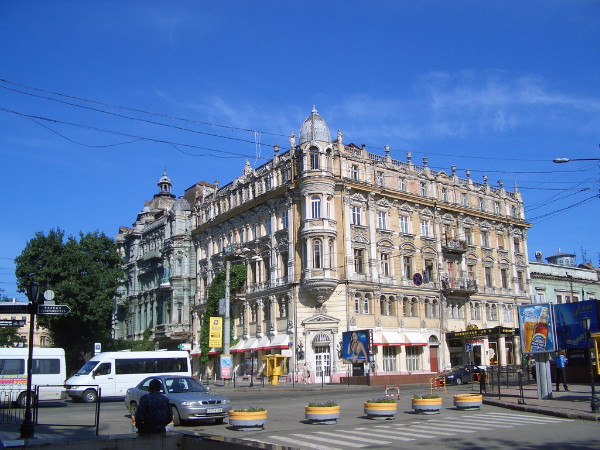
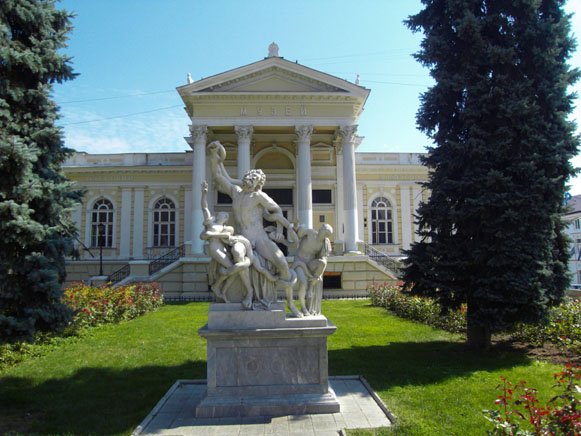
.jpg)
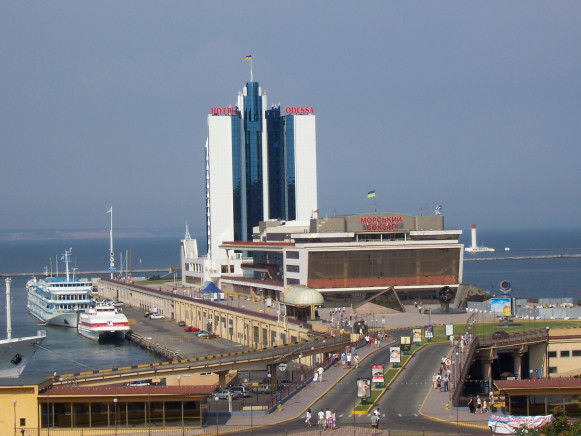
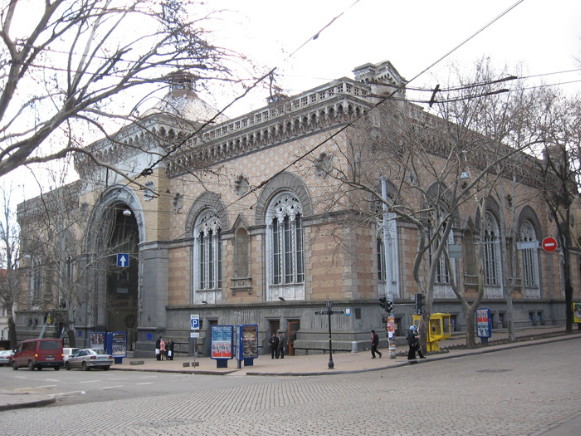
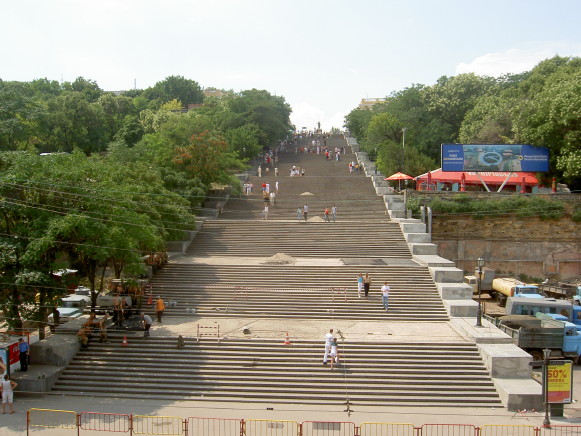
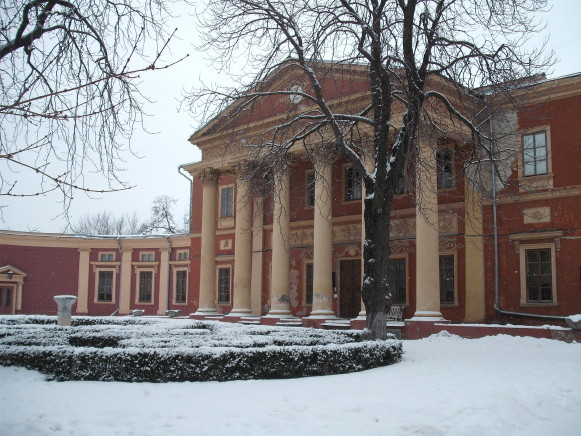
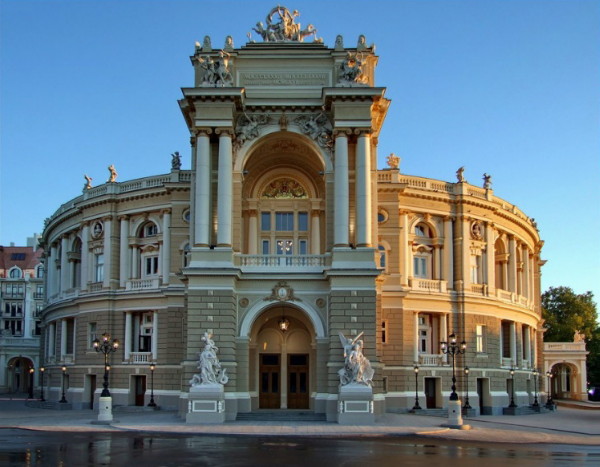
.jpg)
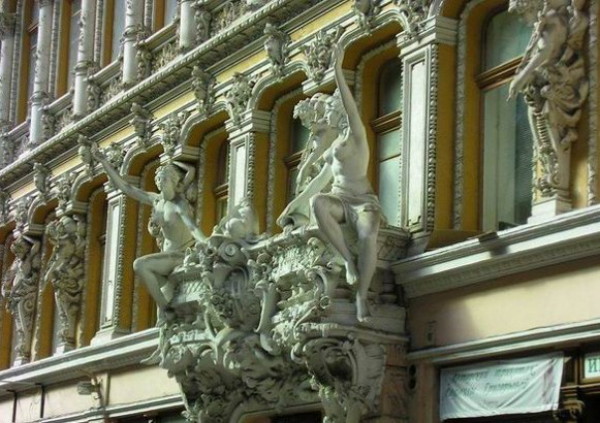
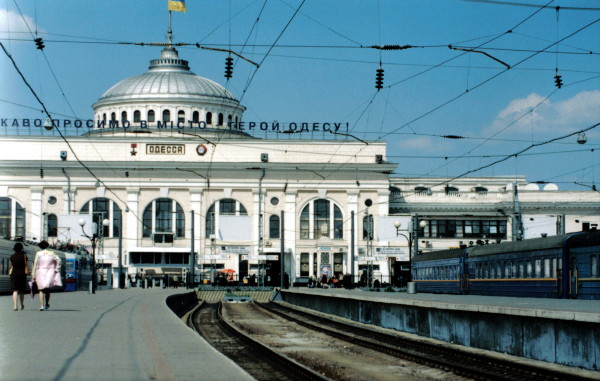
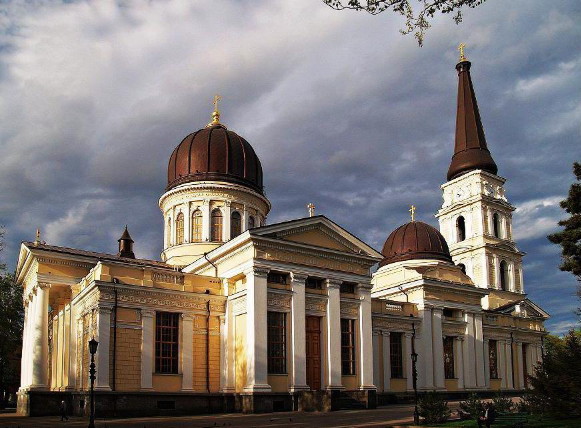
.jpg)
.jpg)